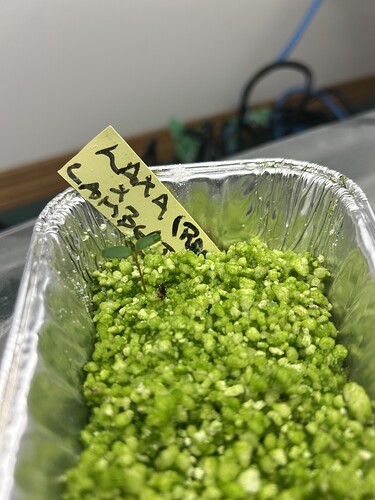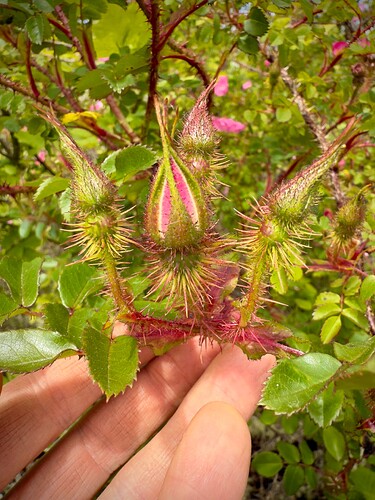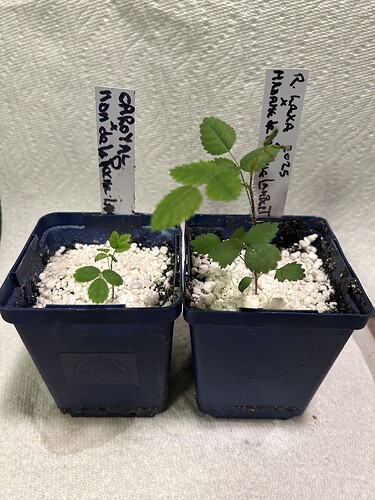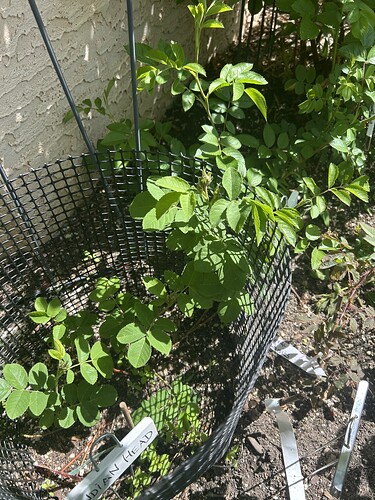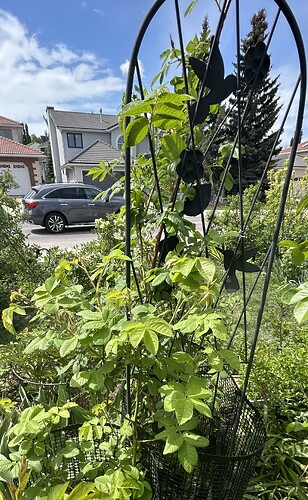I miss the heck out of Pickering and its reliably interesting and diverse selection of extremely good-quality grafted roses on RMV-free rootstock. There hasn’t been any other company that entirely fills that void, and maybe there never will be.
Foolishly, I tried to get ‘Soleil d’Or’ to grow both in MN (from Pickering–it failed so spectacularly from blackspot, I wonder how they managed to grow it in Ontario!) and here. I had a little success for a while by keeping an own-root plant indoors under lights, which lasted until spider mites got out of control, and it didn’t react very well to spraying. I never got anything to set using the pollen that I collected, but I suppose that any offspring would have been very blackspot prone as well. After I got that out of my system (mostly), I resolved to just work with modern descendants that don’t have all of those liabilities (or at least can be kept alive a little longer for breeding than SdO).
Bourbons and Portlands were always favorites of mine, too. Cultural issues aside, many make ideal garden roses in terms of habit, form, fragrance, repeat, etc. It has always seemed strange to me that Hybrid Perpetuals displaced them. Few do well here (blackspot) and those that are a bit better are often on the fringe for the class, like ‘Souvenir de la Malmaison’. I’ve come to realize that it is possible to get similar OGR charm and character using much more modern varieties that have better health as building blocks.
There truly are no consistent sources for interesting species roses these days; you just have to hunt and peck and hope to find a few here, a few there. Many species are simply unavailable now (in the U.S., anyway.) I’m not sure how many species thrive in this area anyway, but it’s always informative and sometimes useful to try new species germplasm.
All of this talk reminds me, if you wanted to try to complete your hardier neo-Damask hybrid, maybe ‘Lykkefund’ would be a good sub for the missing R. moschata fraction of the Damask species trifecta. If that R. fedtschenkoana-gallica cross of yours blooms this spring, you could even have a chance at making it happen this year! Luckily, the flowers of ‘Lykkefund’ are a lot bigger and infinitely easier to work with than is the case with ‘Polstjarnan’. I completely agree with you, that thing was the worst rose I ever tried to cross with because of the ridiculously small flowers (which refused all pollen I tried anyway, and seemed to have no pollen themselves). The wicked thorns didn’t help, either. (Hmm, ‘Polstjarnan’ x ‘Lykkefund’, maybe?)
I know a longtime breeder of tiny, fiddly flowered plants who swears by wearable magnifying glasses to make crosses on much smaller flowers than any rose. I’ve never tried it myself, but it is tempting.
Stefan
